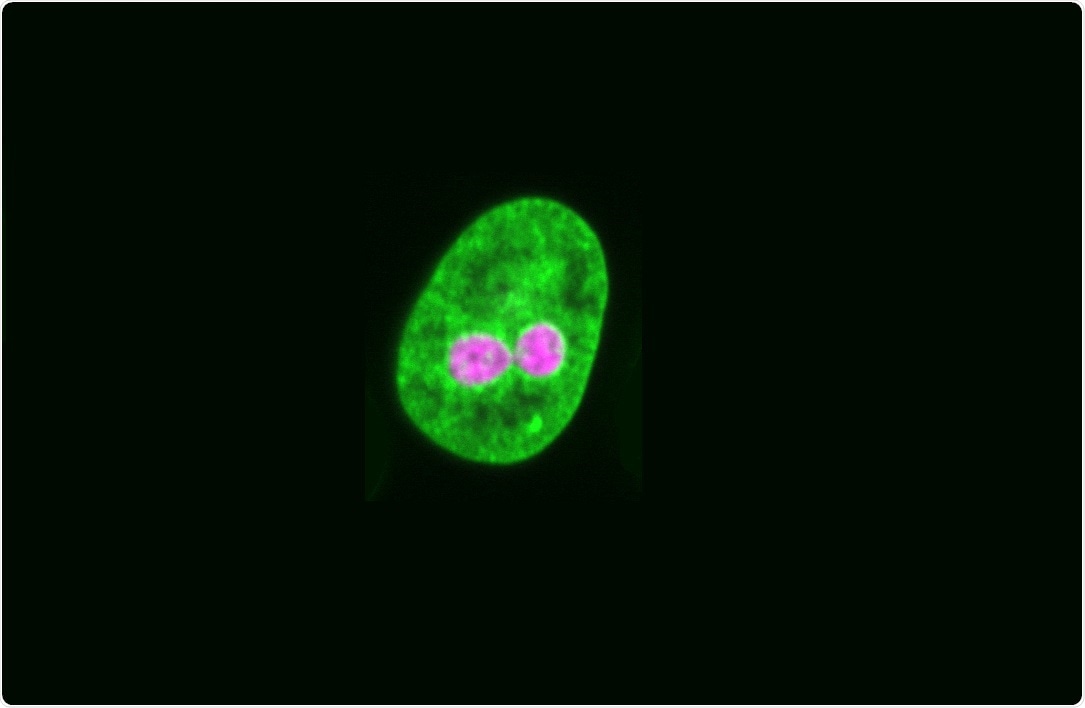Oct 5 2018
Researchers at New York University have found a way to measure the physical properties of the nucleus and its constituents in live human cells.
 A human nucleus with fluorescently labeled chromatin (green) and two nucleoli (purple) in the process of nucleolar coalescence. Image courtesy of Christina Caragine and Alexandra Zidovska, Department of Physics, New York University.
A human nucleus with fluorescently labeled chromatin (green) and two nucleoli (purple) in the process of nucleolar coalescence. Image courtesy of Christina Caragine and Alexandra Zidovska, Department of Physics, New York University.
The method, which was described in the journal Physical Review Letters, could offer a new way of understanding the physical properties of diseased cells such as those seen in Parkinson’s or Alzheimer’s disease.
This non-invasive strategy for measuring material properties in live cell nuclei can yield knowledge that is crucial for understanding the cell nucleus. We think that further development of this approach can have potentially large implications for both disease diagnosis and therapy."
Alexandra Zidovska, Senior Author
The material properties of cell nuclei and their components are essential for all cellular processes.
In particular, the thickness or viscosity of the nucleoplasm affects how molecules and organelles move within the nucleus and scientists think that these properties are altered in various human diseases.
However, measuring these properties has previously proved difficult as the methods used have been hindered by the way cells respond to them.
Now, Zidovska and colleagues have overcome this limitation by using the dynamics and events that occur naturally within the cell nucleus to determine the properties of the nucleus and its components.
They used a technique called high-resolution spinning disc confocal microscopy, which measures spatial and temporal behaviour within live cells.
The team’s non-invasive approach revealed aspects within cells that had not previously been known. In particular, human nucleoli behave like liquid droplets and the nucleoplasm surrounding the droplets is of extremely high viscosity – a feature that slows down the coalescence of the droplets in healthy cells.
Considering that nucleoli are actively transcribing DNA, slow coalescence might prevent the nucleolar transcription from being disrupted, thus helping to ensure a cell's health."
Alexandra Zidovska, Senior Author
She adds that in many diseases such as Parkinson’s, Alzheimer’s and cancer, the size and shape of the nucleus changes and by understanding what drives these changes such as potential variations in the viscosity of nucleolar droplets, researchers could improve their understanding of the nucleolus and nucleus in states of both health and disease.
Source:
NYU Press Release